When my Dad was alive he suffered from terrible hay fever, also known as seasonal allergies, that made him miserable for weeks every summer: itchy, watery eyes, a runny nose, lots of sneezing. He was not happy!
I had a conversation recently with my Mom about hay fever and she was pretty convinced that it is caused by the yellow and very prolific flower, Goldenrod. She is not alone in this line of thinking. Right now in fields everywhere, Goldenrod is in full bloom. It is hard not to miss.
But guess what? Goldenrod is NOT the cause
of hay fever or seasonal allergies!
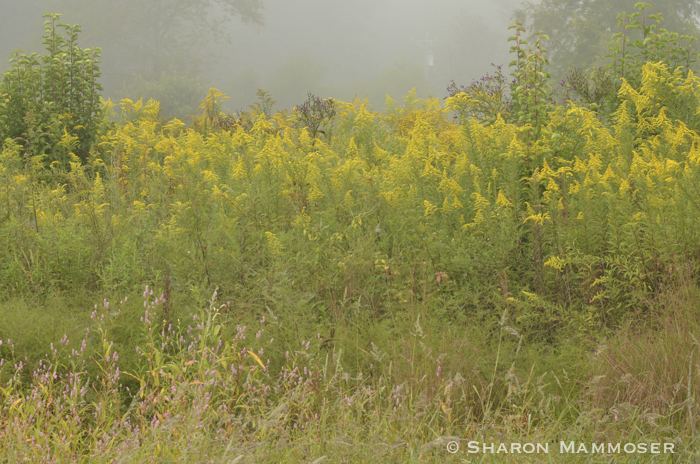
Instead, hay fever is caused by a plant called Ragweed. Though Goldenrod and Ragweed can be found growing together, or in similar places, they are very different.
Some Native American people referred to Goldenrod as “sun medicine,” and just about every part of the plant was used for something. It is not the “bad” plant it is often made out to be!
Here’s a look at Goldenrod:
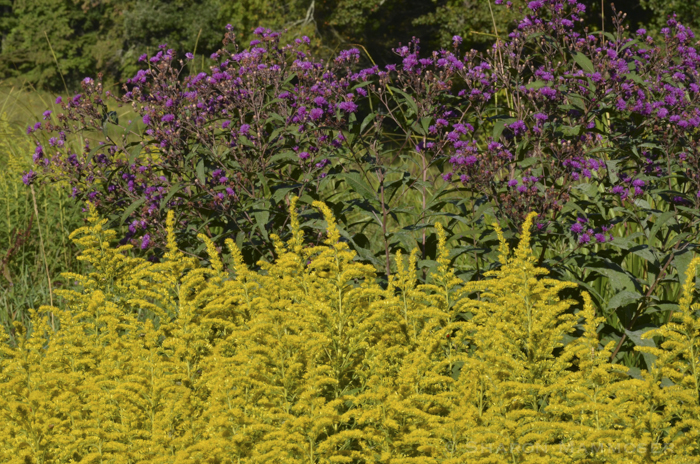
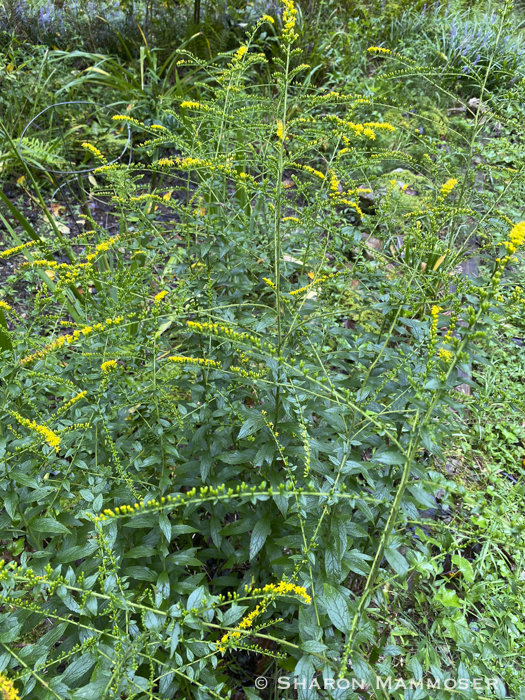
There are over 75 different species of Goldenrod in the US.
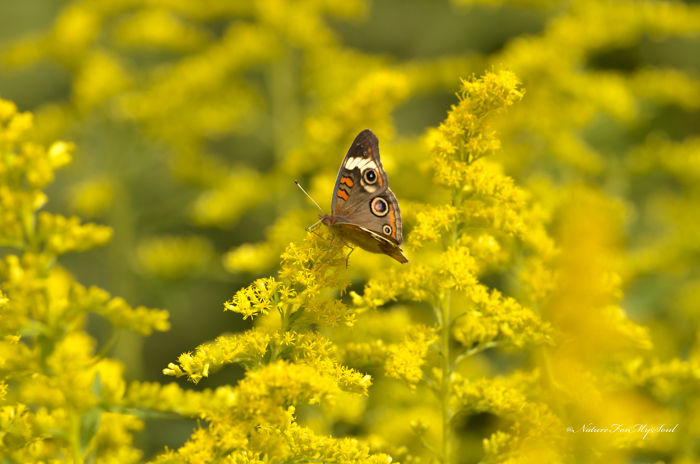
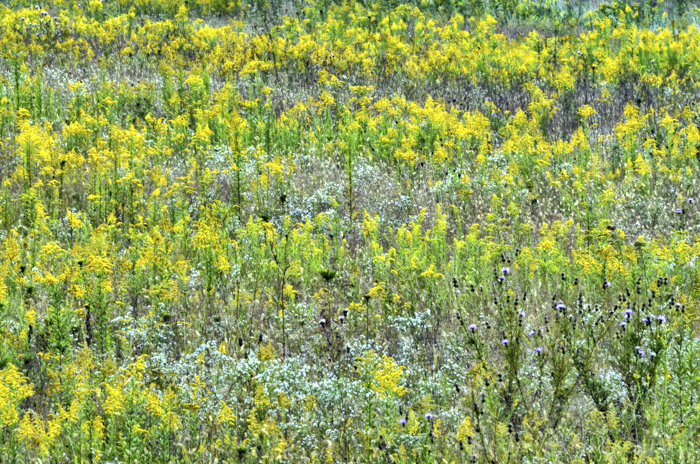
As you can see, the flowers of Goldenrod are big and showy, with lots of yellow. Why is that? Because of course the Goldenrod is a great source of nectar and pollen for hungry insects, like Monarch Butterflies that are migrating to Mexico in late summer and early fall. The sticky pollen grains of Goldenrod are large and easily cling to the the bodies of insects. Goldenrod are pollinated both by insects and the wind, whereas Ragweed is pollinated by the wind. Thus, the Ragweed pollen is fine and dust-like, for easily moving far distances through the air by the wind. When this Ragweed pollen comes into contact with the nasal passages of an allergic person, look out! Sneezing, running nose, and itchy eyes will ensue. According to Clemson University, “A single ragweed plant is capable of producing over a billion pollen grains.” Imagine! No wonder people get terrible allergies from it.
Here is what Ragweed looks like: Notice how it is much less showy, and will grow easily twice as tall as the average species of Goldenrod.


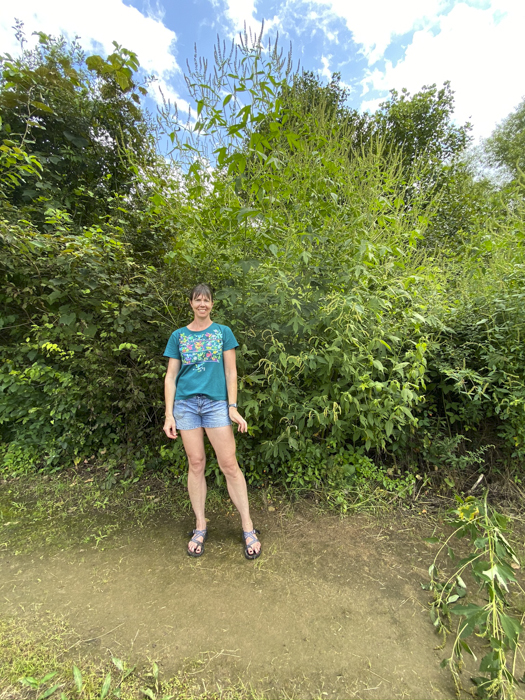
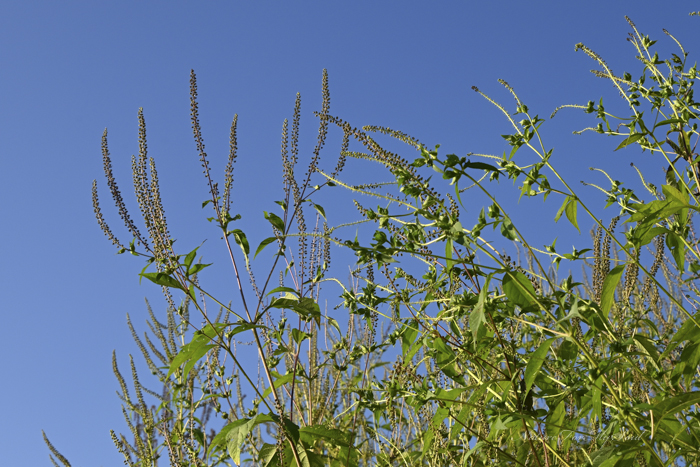
Personally I LOVE seeing a field full of Goldenrod, but I know many who would disagree, quick to label the beautiful plant an aggressive weed. But for the Monarch Butterfly traveling south on its long migration to Mexico, I bet a field FULL of Goldenrod is a very welcome sight. Many, many other insects flock to Goldenrod, such as wasps, skippers, butterflies, moths, beetles, treehoppers, and flies. And then invertebrates that eat those insects like praying mantis and spiders are also attracted.
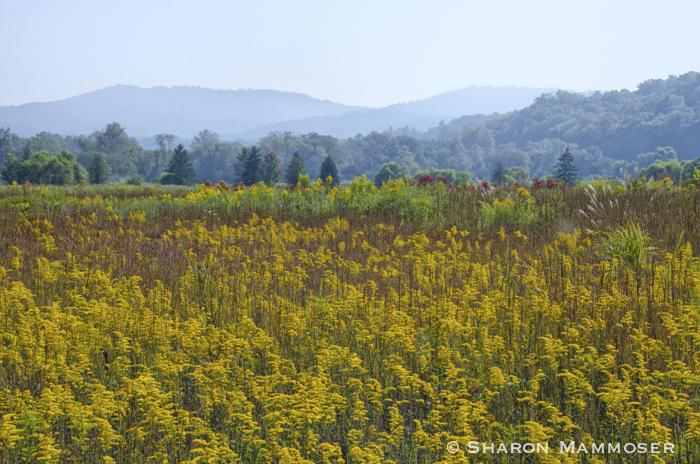
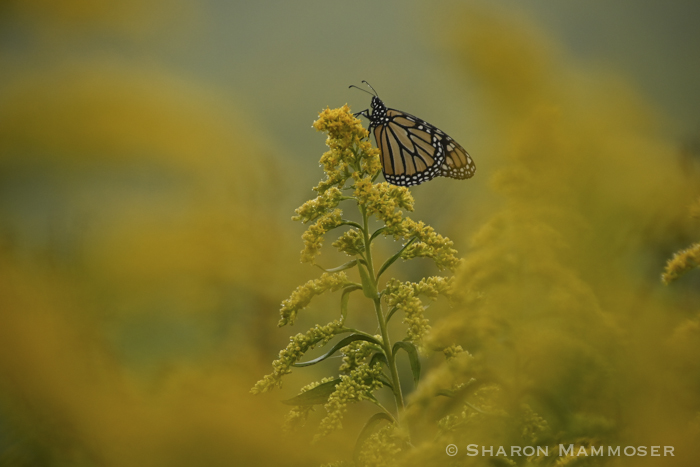
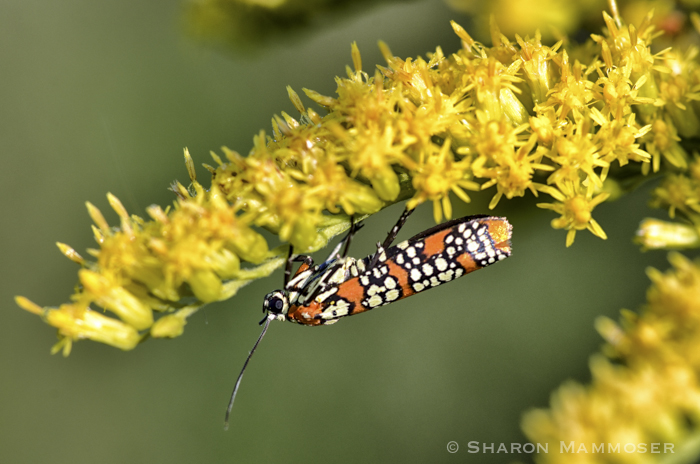
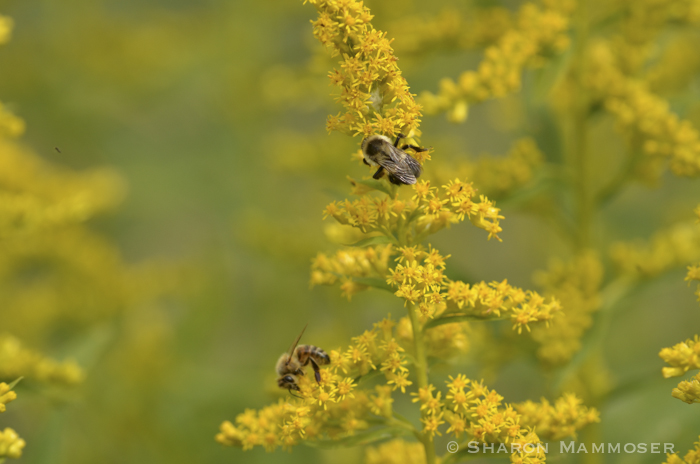
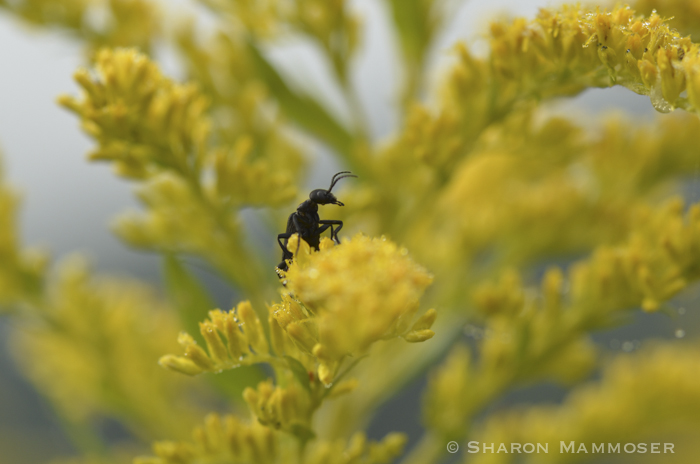
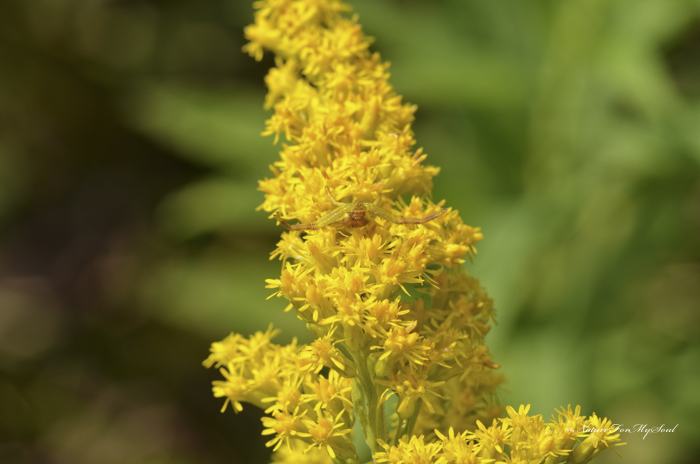

Then, there’s the birds who come to the Goldenrod to feed on the insects, or some, like the Goldfinch, sparrow, indigo Bunting that feed of various parts of the plant. All in all, from a Naturalist’s point of view–it’s a wonderful plant that attracts a lot of different forms of life. What’s not to love?
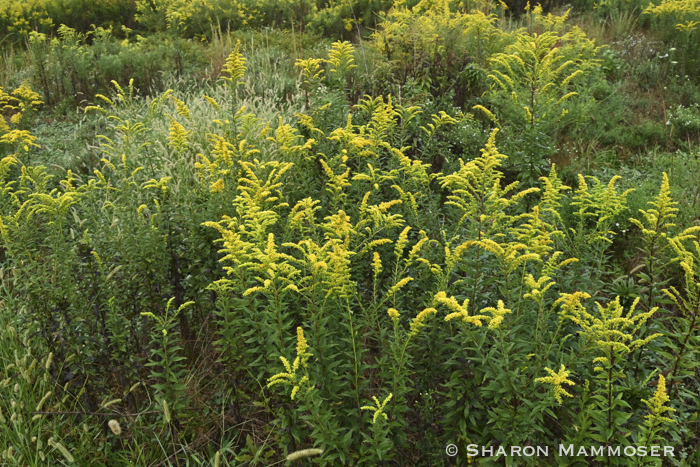

Here’s a poem I came across in my research and thought I would share with you. If you pay attention outside at this time of year, you will be able to appreciate the accuracy of the description. Enjoy!
September
The golden-rod is yellow;
The corn is turning brown;
The trees in apple orchards
With fruit are bending down.
The gentian’s bluest fringes
Are curling in the sun;
In dusty pods the milkweed
Its hidden silk has spun.
The sedges flaunt their harvest,
In every meadow nook;
And asters by the brook-side
Make asters in the brook,
From dewy lanes at morning
The grapes’ sweet odors rise;
At noon the roads all flutter
With yellow butterflies.
By all these lovely tokens
September days are here,
With summer’s best of weather,
And autumn’s best of cheer.
But none of all this beauty
Which floods the earth and air
Is unto me the secret
Which makes September fair.
‘T is a thing which I remember;
To name it thrills me yet:
One day of one September
I never can forget.
—–Helen Hunt Jackson
1830-1885, Amherst, MA

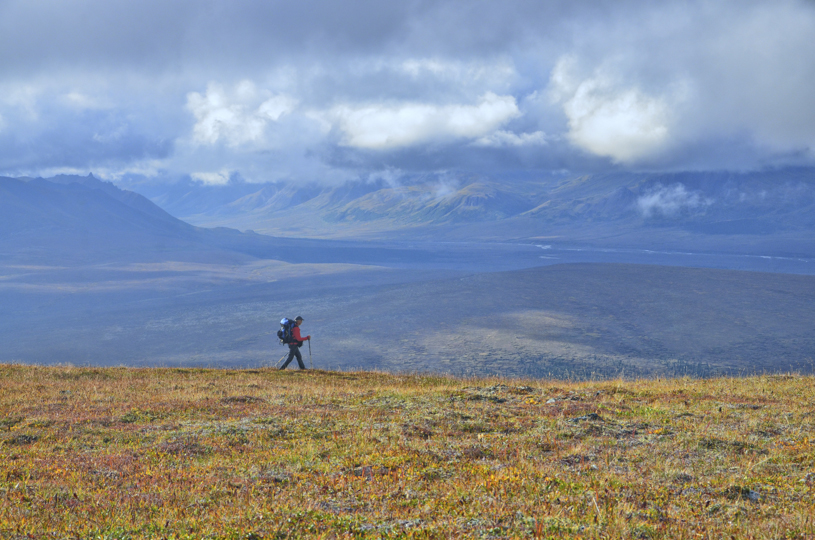
thanks for the pictures showing the difference..I’m grateful to seeing the goldenrod growing because very little flowers left for the monarchs! although they have been scarce this summer
Nanci, you’re welcome. Goldenrod is definitely a great source of nectar for migrating monarchs, though I haven’t seen many this summer either. I wonder what the numbers have been like for Sara— has she noticed a difference? Enjoy the rest of your weekend! Thanks for reading.